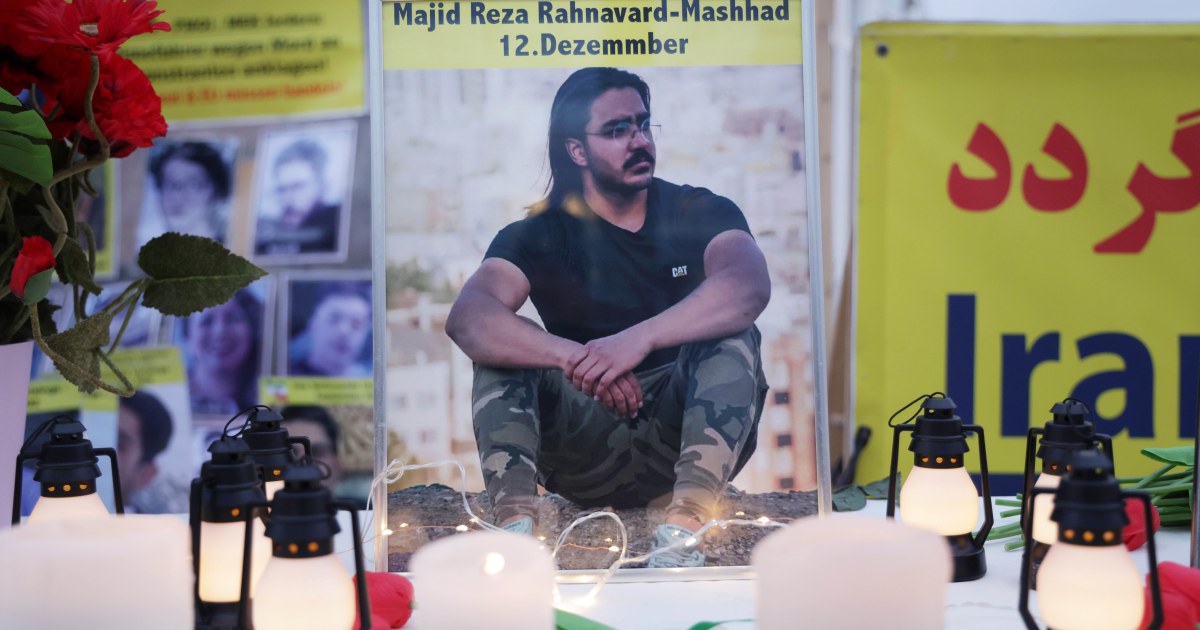Some protesters feel that the regime may also be using executions as a way to shore up its own supporters, and reduce the risk of dissent in its ranks by showing it will deal severely with alleged crimes against members of the security forces and pro-government militia.
“It’s like they want to tell their security agents that, ‘See, we are not letting people get away with harming you in any way,’” Saeed said.
“Some members of the Basij and security forces have died and the regime thinks that it is their duty to take revenge,” said Tehran resident Yan, an aspiring filmmaker also in his 30s, who was also involved in the demonstrations. “Blood for blood, an eye for an eye, this is the mentality of the regime,” he added. “This means that for each and every one of their security forces who dies, they will be hanging a protester by the neck in retaliation.”
The executions have been met with a range of emotions among Iranians at home and abroad. “My sense is one of shock, resignation and enhanced determination,” Ansari said.
Saeed says he was so despondent when he heard about the first execution last week that he was lying in bed all morning unable to move. “I woke up in the morning and saw the news,” he said. “I sat still and silent in my bed for two hours and turned off my phone and went to sleep again from sheer sadness.”
That feeling soon turned to rage, he said, coupled with a renewed fearlessness about the prospect of being jailed by the regime, now that some had lost their lives.
“I must admit that I was afraid of being jailed before these executions, but now, I am thinking that I could tolerate it,” he said. “There is no gray area left anymore” between the protesters and authorities, he added. “Either you are with the people on the side of justice or against them on the side of cruelty.”
Many people are terrified by the executions, but Saeed noted that with fear comes unpredictability, which he says is a potential danger for the regime. “Angry and scared is much more dangerous than just angry, and that is how people feel,” he added. “When you are scared and angry, you do things that are unexpected.”
The unrest broke out in mid-September when a Kurdish woman, Mahsa Amini, 22, died in a hospital three days after being arrested by the country’s morality police for allegedly breaking the country’s strict dress code. A three-day, nationwide strike earlier this month saw daily life across this nation of 85 million grind to a halt, and there has been a push on social media for another strike this week.
In all, at least 475 people have been killed and 18,000 others arrested, according to the Washington area-based watchdog group Human Rights Activists in Iran. Iran’s Interior Ministry said earlier this month the death toll was 200, including security forces who were killed.
“The Iranian authorities are adamant on continuing their killing spree, both on the streets and through sham trials,” Diana Eltahawy, Amnesty International’s deputy director for the Middle East and North Africa, said in a statement after Shekari’s execution. “The clear aim is to instill fear among the public in a desperate attempt to cling to power and end the popular uprising.”
Amnesty has tallied 12 people it says are facing the death penalty related to the protests, and another five who are facing trial or have been charged with crimes carrying the death penalty. Rahnavard was the sixth.
But even if the judicial killings continue, many of those involved in the uprising say they will remain undeterred.
“Revolutions have consequences, and we need to pay the price for freedom,” Yan said. “Unfortunately, that sometimes means losing lives.”
The Associated Press contributed.
Share your story or advertise with us: Whatsapp: +2347068606071 Email: info@newspotng.com



![Tinubu, Matawalle, others join special prayers for Nigeria’s fallen heroes [photos]](https://newspotng.com/wp-content/uploads/2025/01/Tinubu-Matawalle-others-join-special-prayers-for-Nigerias-fallen-heroes-218x150.jpg)



![Tinubu, Matawalle, others join special prayers for Nigeria’s fallen heroes [photos]](https://newspotng.com/wp-content/uploads/2025/01/Tinubu-Matawalle-others-join-special-prayers-for-Nigerias-fallen-heroes-324x235.jpg)



![Tinubu, Matawalle, others join special prayers for Nigeria’s fallen heroes [photos]](https://newspotng.com/wp-content/uploads/2025/01/Tinubu-Matawalle-others-join-special-prayers-for-Nigerias-fallen-heroes-324x160.jpg)


